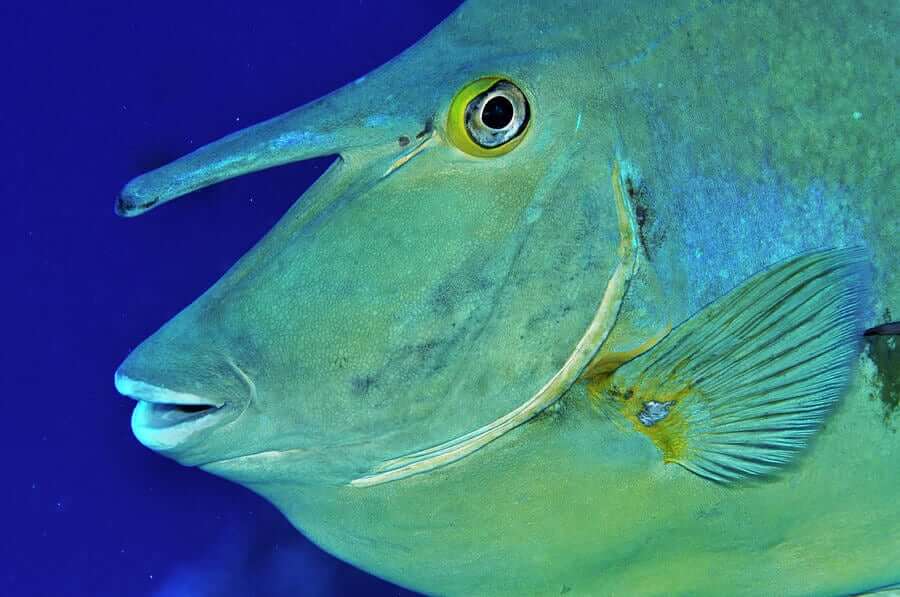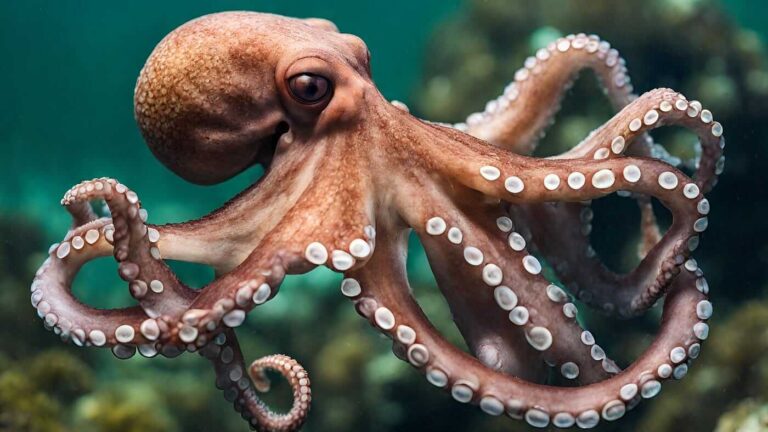Unicornfish: Habitat, Behavior, Diet, and Conservation Insights
The Unicornfish (genus Naso) is a fascinating species in tropical marine environments. Known for the distinctive horn-like extension on their forehead, these fish have captivated marine enthusiasts and researchers alike. This article delves into the unicornfish’s scientific classification, physical characteristics, habitat, behavior, diet, reproduction, predators, conservation status, evolutionary history, interesting facts, and its relationship with humans.
Contents
Scientific Classification
- Kingdom: Animalia
- Phylum: Chordata
- Class: Actinopterygii
- Order: Acanthuriformes
- Family: Acanthuridae
- Genus: Naso
- Species: Multiple species, including Naso unicornis (Bluespine Unicornfish) and Naso brevirostris (Shortnose Unicornfish)
The unicornfish belongs to the family Acanthuridae, commonly referred to as surgeonfish or tangs. Its genus name, Naso, translates to “nose,” referencing the prominent snout or horn seen in some species.
Physical Characteristics

Unicornfish are named for the bony, horn-like projection found between their eyes. This feature is more pronounced in adult fish, especially males. These fish can grow up to 100 cm (about 39 inches) in length, though size varies by species.
- Body Shape: Streamlined, laterally compressed bodies aid in swift movement through coral reefs.
- Coloration: Most species exhibit muted colors like gray, brown, or blue, often with spots or lines, but they can change colors based on mood or environment.
- Horn: The signature horn is not present in all species nor serves a well-understood biological function. It’s believed to play a role in mating or territorial disputes.
- Caudal Peduncle: Like other surgeonfish, unicornfish have sharp spines near the tail that act as defensive tools.
Habitat
Unicornfish are primarily found in tropical waters, preferring coral reef environments. They inhabit the Indo-Pacific region, including the Red Sea, the eastern coast of Africa, and the waters surrounding islands such as Hawaii, Fiji, and Japan.
- Depth Range: Depending on the species and local conditions, they are typically found at depths of 5 to 120 meters.
- Preferred Environment: Coral reefs provide food, shelter, and breeding grounds. Some species also migrate to deeper waters during certain seasons.
Behavior

Unicornfish are active swimmers, often found in small groups or schools. They exhibit territorial behavior, especially males, during breeding seasons.
- Social Structure: Some species are solitary, while others form schools.
- Daily Activity: They are diurnal, meaning they are active during the day and rest at night.
- Territoriality: During breeding periods, males may become aggressive, using their sharp tail spines to defend their territory.
Diet
Unicornfish are herbivores, primarily feeding on algae, but occasionally consume small invertebrates.
- Feeding Habits: Grazing on algae from rocks and coral is their primary feeding behavior. Their role as herbivores is to help maintain the balance in coral reef ecosystems by preventing algae overgrowth.
- Special Adaptations: Unicornfish have a specialized mouth designed to scrape algae off surfaces, contributing to the health of coral reefs.
Reproduction
Unicornfish reproduce through external fertilization. They engage in a unique spawning behavior during which females release eggs and males simultaneously release sperm into the water.
- Spawning Season: Most species spawn during full moons, taking advantage of tidal cycles.
- Eggs and Larvae: The eggs are pelagic (floating), and the larvae drift with ocean currents until they grow large enough to settle into a reef environment.
- Mating Behavior: Males often display their horns and compete to attract females.
Predators
As with many reef fish, unicornfish face predation from larger marine species.
- Natural Predators: Sharks, large groupers, and barracudas are common predators. Juvenile unicornfish are particularly vulnerable to smaller predatory fish.
- Defensive Mechanisms: Unicornfish use the sharp spines near their tail as a defense mechanism, delivering painful slashes to deter attackers.
Conservation Status
According to the IUCN Red List, most unicornfish species are categorized as “Least Concern” due to their wide distribution and stable populations. However, threats such as overfishing and coral reef degradation threaten their habitat.
- Fishing: Unicornfish are sometimes caught for food, particularly in local fisheries. Overfishing in certain areas could lead to population declines.
- Coral Reef Threats: As coral reefs face destruction from climate change, pollution, and human activities, the habitat of unicornfish is also under threat.
- Conservation Efforts: Protecting coral reef ecosystems through marine reserves and reducing overfishing are essential to the long-term survival of unicornfish species.
Interesting Facts
- Color Changing Abilities: Unicornfish can change color depending on their environment or mood, helping them blend into their surroundings or signal to other fish.
- No Known Function for the Horn: Despite the iconic horn of many species, scientists are still unsure of its exact function, though it may play a role in social interactions or mating.
- Ecosystem Role: As herbivores, unicornfish help maintain the health of coral reefs by preventing algae overgrowth, which can suffocate coral.
Evolutionary History
The genus Naso is part of the Acanthuridae family, which evolved during the Eocene epoch, over 40 million years ago. Their evolution has been shaped by the diverse reef environments they inhabit. Over time, different species developed unique adaptations, such as the horn, which is hypothesized to have evolved for social signaling or mate selection.
Relationship with Humans
Unicornfish are commonly seen in the aquarium trade due to their distinctive appearance and manageable size. However, they require large tanks and special care due to their need for clean, algae-rich environments. They are also a food source in certain Pacific island nations, where they are caught using traditional fishing methods.
Conclusion
The unicornfish is a remarkable species that plays an important role in maintaining the balance of coral reef ecosystems. While not currently at risk of extinction, their dependence on healthy coral reefs makes their future uncertain in the face of climate change and habitat destruction. Conservation efforts to preserve coral reefs are critical to ensuring that unicornfish and many other marine species thrive for generations. Their unique physical characteristics and ecological importance continue to make them a subject of fascination for marine biologists and ocean enthusiasts alike.
- Are Rottweilers Good With Kids? Reasons & Training Tips - 17 September 2025
- How Long Are Dogs Pregnant: Complete Guide - 16 September 2025
- German Shepherd Doberman Mix: Info, Pictures, Care & More - 11 September 2025







